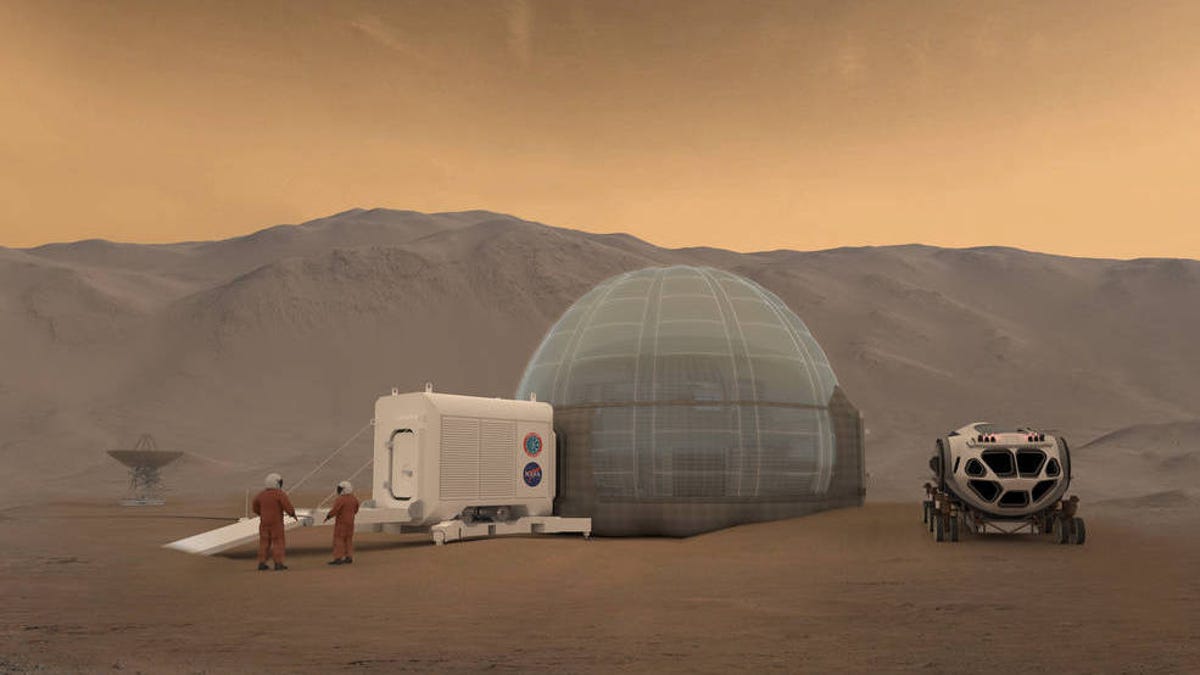Mars explorers might make concrete-like materials from their own blood and urine
Gross. Blood, sweat, tears, urine and Martian dust could be a magic formula for building on the red planet.

Artists have been imagining what habitats on Mars might look like. This concept for NASA shows an ice home.
It's fun to sit on Earth and imagine what our future human Mars colonies might look like, but there are lots of challenges to actually building them. Researchers from the UK's University of Manchester have come up with a bloody good idea for creating construction materials on the red planet.
We can't just pack bags and bags of concrete (and all the water needed for it) onto a spacecraft heading to Mars. It's too expensive. The scientists suggest using what's on hand instead: dust, urine (or sweat or tears) and astronaut blood.
A study published in the journal Materials Today Bio shows space explorers could make a concrete-like material by using a protein (human serum albumin) from blood plasma as a binder mixed with moon or Mars dust. The team calls the biocomposite "AstroCrete" and says it's as strong as regular concrete.
"Scientists have been trying to develop viable technologies to produce concrete-like materials on the surface of Mars, but we never stopped to think that the answer might be inside us all along," lead author Aled Roberts said in a statement on Monday.
This 3D-printed Mars biocomposite could be a future building material for astronauts on the red planet.
The idea of using animal blood as a binder for mortar goes back to at least medieval times.
Blood isn't the only bodily fluid the scientists are investigating. Add some urea (a waste product humans produce through urine, sweat and tears) and the AstroCrete becomes even stronger than regular concrete.
The idea of using urine in off-world building materials has been studied before. A different group of researchers mixed urea with a moon regolith substitute to create a kind of moon concrete.
Moon and Mars biocomposites made with astronaut blood and urea could be used as a construction material on site.
Blood is a renewable resource. The researchers worked out that six astronauts could produce over 1,100 pounds (500 kilograms) of AstroCrete during a two-year mission. The material could potentially be 3D-printed, and could act as a mortar for sandbags.
AstroCrete may not generate the sort of futuristic, expanses-of-glass habitats we've seen in sci-fi productions, but it could be a practical and affordable solution to the tricky problem of creating structures on Mars.

